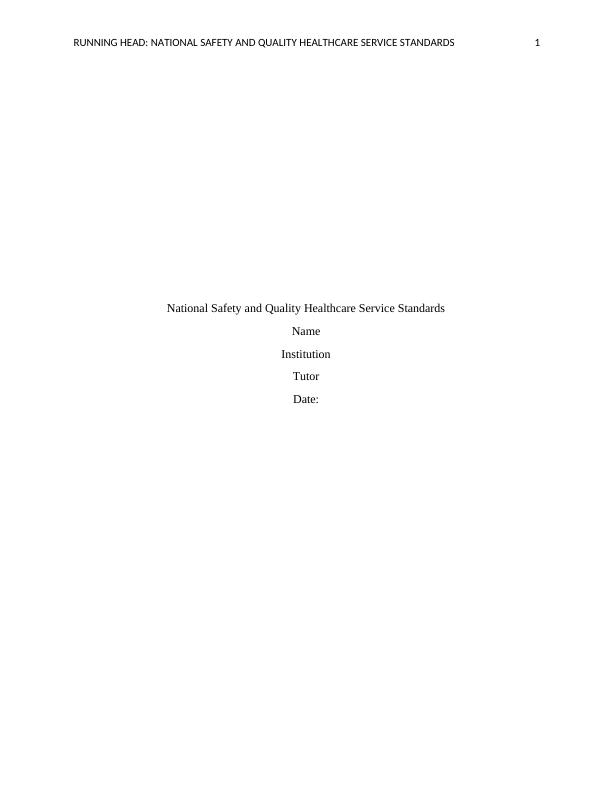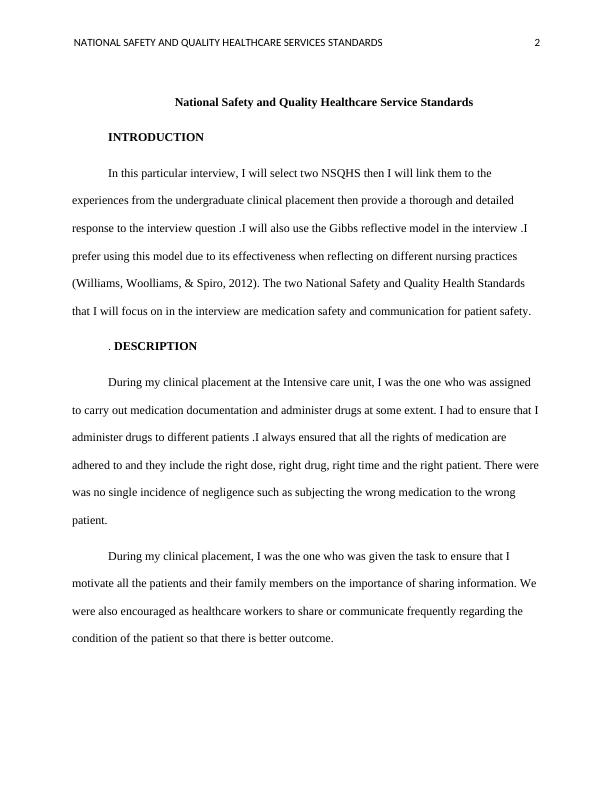National Safety and Quality Healthcare Service Standards
Summary: This assignment requires students to reflect on their understanding of two NSQHS standards and discuss relevant clinical nursing experiences from their clinical practicum, providing justification for each based on these patient care experiences.
7 Pages1401 Words244 Views
Added on 2023-06-08
About This Document
This article discusses the importance of medication safety and communication for patient safety as National Safety and Quality Healthcare Service Standards. It includes experiences from an undergraduate clinical placement and the use of Gibbs reflective model. The article emphasizes the need for adherence to these standards in healthcare facilities.
National Safety and Quality Healthcare Service Standards
Summary: This assignment requires students to reflect on their understanding of two NSQHS standards and discuss relevant clinical nursing experiences from their clinical practicum, providing justification for each based on these patient care experiences.
Added on 2023-06-08
ShareRelated Documents
End of preview
Want to access all the pages? Upload your documents or become a member.
National Safety and Quality Healthcare Service Standards
|6
|1245
|340
National Safety and Quality Healthcare Service Standards
|6
|1145
|254
NRSG367 Assessment - Critical Reflection on Past Clinical Practice Experience
|8
|1542
|16
National Safety and Quality Health Service Standard | Reflection
|6
|1348
|21
Reflection on NSQHS Standards: Medication Safety and Infection Control
|6
|1488
|269
Reflection on Understanding of NSQHS Standards in Nursing Practice
|6
|1383
|59



